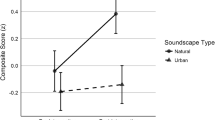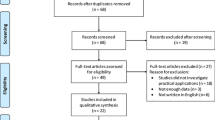Abstract
This study explored differences between pianists and non-musicians during reading of sentences describing high- or low-pitched auditory events. Based on the embodied model of language comprehension, it was hypothesized that the experience of playing the piano encourages a corresponding association between high-pitched sounds and the right and low-pitched sounds and the left. This pitch-space association is assumed to become elicited during understanding of sentences describing either a high- or low-pitched auditory event. In this study, pianists and non-musicians were tested based on the hypothesis that only pianists show a compatibility effect between implied pitch height and horizontal space, because only pianists have the corresponding experience with the piano keyboard. Participants read pitch-related sentences (e.g., the bear growls deeply, the soprano singer sings an aria) and judged whether the sentence was sensible or not by pressing either a left or right response key. The results indicated that only the pianists showed the predicted compatibility effect between implied pitch height and response location. Based on the results, it can be inferred that the experience of playing the piano led to an association between horizontal space and pitch height in pianists, while no such spatial association was elicited in non-musicians.


Similar content being viewed by others
Notes
The compatibility effect was not affected by the switch of response mapping (‘sensible right’ vs. ‘sensible left’) nor by the repetition of blocks 1 and 2.
Importantly, data interpretation was not affected by this exclusion. The analyses with and without the problematic item showed qualitatively similar results.
The group of non-musicians is most likely a less homogeneous group than the group of pianists, and might therefore have higher error variability. To account for this issue, we log-transformed the data (see e.g., Keppel & Wickens, 2004; Winter, 2013) and ran an additional ANOVA (including the same factors) with logRTs. The analyses showed qualitatively similar results to the analyses with untransformed RTs (Interaction between group and compatibility: F 1 (1,78) = 6.11, p = 0.01; F 2 (1,117) = 3.5, p = 0.06, Post-hoc tests for pianists: F 1 (1,39) = 7.9, p = 0.008; F 2 (1,117) = 5.9, p = 0.02; Post-hoc tests for non-musicians: F S < 1).
Additionally, we performed a mixed effect modeling analysis using R and lme4 (Bates, Maechler, Bolker, & Walker, 2014). As fixed effects we entered compatibility and group into the model. As random effects we had random intercepts for subjects and items as well as by-subject random slopes for the effect of compatibility and by-item random slopes for the effect of compatibility and group. In a first step, we compared this model M0 to a model M1, which additionally included the effect of interest, i.e., the interaction between compatibility and group. The results of the likelihood ratio tests confirmed the findings from the ANOVAs: Model M1 explained the data significantly better than model M0 [χ 2(1) = 3.9, p < 0.05]. We again ran separate mixed effect modeling analyses for the group of pianists and non-musicians. For the group of pianists, the model containing the compatibility effect explained the data significantly better [χ 2(5) = 15.16, p = 0.01], which was not the case for the group of non-musicians [χ 2(5) = 6.31, p = 0.28].
References
Areshenkoff, C. N., Bub, D., & Masson, M. E. J. (2017). Task-dependent motor representations evoked by spatial words: Implications for embodied accounts of word meaning. Journal of Memory and Language, 92, 158–169.
Barsalou, L. W. (1999). Perceptual symbol systems. Behavioral and Brain Sciences, 22, 577–660.
Bates, D., Maechler, M., Bolker, B., & Walker, S. (2014). lme4: Linear mixed-effects models using Eigen and S4. R package version 1.1-5.
Bub, D. N., & Masson, M. E. (2010). On the nature of hand-action representations evoked during written sentence comprehension. Cognition, 116(3), 394–408.
Cho, Y. S., Proctor, R. W., & Bae, G. Y. (2012). Referential coding contributes to the horizontal SMARC effect. Journal of Experimental Psychology: Human Perception and Performance, 38(3), 726–734.
Connell, L. (2007). Representing object colour in language comprehension. Cognition, 102, 476–485.
de la Vega, I., De Filippis, M., Lachmair, M., Dudschig, C., & Kaup, B. (2012). Emotional valence and physical space: Limits of interaction. Journal of Experimental Psychology: Human Perception and Performance, 38, 375–385.
Dolscheid, S., Hunnius, S., Casasanto, D., & Majid, A. (2014). Prelinguistic infants are sensitive to space-pitch associations found across cultures. Psychological Science, 25, 1256–1261.
Dudschig, C., de la Vega, I., & Kaup, B. (2015). What’s up? Emotion-specific activation of vertical space during language processing. Acta Psychologica, 156, 143–155.
Dudschig, C., & Kaup, B. (2016). Is it all task-specific? The role of binary responses, verbal mediation and saliency for eliciting language-space associations. Journal of Experimental Psychology: Learning, Memory and Cognition. doi:10.1037/xlm0000297
Dudschig, C., Mackenzie, I. G., Strozyk, J., Kaup, B., & Leuthold, H. (2016). The sound of sentences: differentiating the influence of physical sound, sound imagery, and linguistically implied sounds on physical sound processing. Cognitive, Affective, & Behavioral Neuroscience, 16, 940–961.
Eitan, Z., & Timmers, R. (2010). Beethoven's last piano sonata and those who follow crocodiles: cross-domain mappings of auditory pitch in musical context. Cognition, 114, 405–422.
Glenberg, A. M., & Kaschak, M. P. (2002). Grounding language in action. Psychonomic Bulletin & Review, 9, 558–565.
Hauk, O., Johnsrude, I., & Pulvermüller, F. (2004). Somatotopic representation of action words in human motor and premotor cortex. Neuron, 41, 301–307.
Holt, L. E., & Beilock, S. L. (2006). Expertise and its embodiment: Examining the impact of sensorimotor skill expertise on the representation of action-related text. Psychonomic Bulletin & Review, 13(4), 694–701.
Hutchinson, S., & Louwerse, M. M. (2014). Language statistics explain the spatial–numerical association of response codes. Psychonomic Bulletin & Review, 21(2), 470–478.
Kaup, B., Lüdtke, J., & Zwaan, R. A. (2006). Processing negated sentences with contradictory predicates: Is a door that is not open mentally closed? Journal of Pragmatics, 38, 1033–1050.
Keppel, G., & Wickens, T. (2004). Design and analysis. A researcher’s handbook. New Jersey: Pearson Education Internationl.
Kintsch, W. (1988). The role of knowledge in discourse comprehension: A construction-integration model. Psychological Review, 95(2), 163–182.
Kintsch, W., & Van Dijk, T. (1978). Towards a model of text comprehension and production. Psychological Review, 85, 363–394.
Lachmair, M., Dudschig, C., De Filippis, M., de la Vega, I., & Kaup, B. (2011). Root versus roof: automatic activation of location information during word processing. Psychonomic Bulletin & Review, 18, 1180–1188.
Lai, V. T., Willems, R. M., & Hagoort, P. (2015). Feel between the lines: Implied emotion in sentence comprehension. Journal of Cognitive Neuroscience, 27(8), 1528–1541.
Lakoff, G., & Johnson, M. (1980). The metaphorical structure of the human conceptual system. Cognitive Science, 4, 195–208.
Lebois, L. A., Wilson-Mendenhall, S. J., & Barsalou, J. W. (2015). Are automatic conceptual cores the gold standard of semantic processing? The context-dependence of spatial meaning in grounded congruency effects. Cognitive Science, 39(8), 1764–1801.
Lidji, P., Kolinsky, R., Lochy, A., & Morais, J. (2007). Spatial associations for musical stimuli: A piano in the head? Journal of Experimental Psychology, 33, 1189–1207.
Masson, M. E. J., & Loftus, G. R. (2003). Using confidence intervals FPR graphically based data interpretation. Canadian Journal of Experimental Psychology, 57(3), 203–220.
Miller, J., & Ulrich, R. (2013). Mental chronometry and individual differences: Modeling reliabilities and intercorrelations of reaction time means and effect sizes. Psychonomic Bulletin & Review, 819–858.
Möhring, W., Ramsook, K. A., Hirsh-Pasek, K., Golinkoff, R. M., & Newcombe, N. S. (2016). Where music meets space: Children’s sensitivity to pitch intervals is related to their mental spatial transformation skills. Cognition, 151, 1–5.
Myung, J., Blumstein, S. E., & Sedivy, J. C. (2006). Playing on the typewriter, typing on the piano: manipulation knowledge of objects. Cognition, 98(3), 223–243.
Nishimura, A., & Yokosawa, K. (2009). Effects of laterality and pitch height of an auditory accessory stimulus on horizontal response selection: The Simon effect and the SMARC effect. Psychonomic Bulletin & Review, 16(4), 666–670.
Parkinson, C., Kohler, P. J., Sievers, B., & Wheatley, T. (2012). Associations between auditory pitch and visual elevation do not depend on language: Evidence from a remote population. Perception, 41(7), 854–861.
Rusconi, E., Kwan, B., Giordano, B. L., Umiltá, C., & Butterworth, B. (2006). Spatial representation of pitch height: The SMARC effect. Cognition, 99, 113–129.
Santiago, J., Lupiáñez, J., Pérez, E., & Funes, M. J. (2007). Time (also) flies from left to right. Psychonomic Bulletin & Review, 14, 512–516.
Simon, J. R. (1969). Reactions toward the source of stimulation. Journal of Experimental Psychology, 81(1), 174–176.
Spence, C. (2011). Crossmodal correspondences: A tutorial review. Attention, Perception, & Psychophysics, 73(4), 971–995.
Tettamanti, M., Buccino, G., Saccuman, M. C., Gallese, V., Danna, M., Scifo, P., & Perani, D. (2005). Listening to action-related sentences activates fronto-parietal motor circuits. Journal of Cognitive Neuroscience, 17(2), 273–281.
Torralbo, A., Santiago, J., & Lupiáñez, J. (2006). Flexible conceptual projection of time onto spatial frames of reference. Cognitive Science, 30(4), 745–757.
Trimarchi, P. D., & Luzatti, C. (2011). Implicit chord processing and motor representation in pianists. Psychological Research, 75, 122–128.
Ulrich, R., Eikmeier, V., de la Vega, I., Ruiz Fernández, S., Alex-Ruf, S., & Maienborn, C. (2012). With the past behind and the future ahead: Back-to-front representation of past and future sentences. Memory & Cognition, 40(3), 483–495.
Ulrich, R., & Maienborn, C. (2010). Left-right coding of past and future in language: The mental timeline during sentences processing. Cognition, 117, 126–138.
Walker, P., Bremner, J. G., Mason, U., Spring, J., Mattock, K., Slater, A., & Johnson, S. P. (2010). Preverbal infants’ sensitivity to synaesthetic cross-modality correspondences. Psychological Science, 21, 21–25.
Wallace, R. J. (1971). SR compatibility and the idea of a response code. Journal of Experimental Psychology: General, 88(3), 354–360.
Winter, B. (2013). Linear models and linear mixed effects models in R with linguistic application. arXiv:1308.5499.
Wolter, S., Dudschig, C., de la Vega, I., & Kaup, B. (2015). Musical metaphors: Evidence for a spatial grounding of non-literal sentences describing auditory events. Acta Psychologica, 156, 126–135.
Zwaan, R. A., & Madden, C. J. (2005). Embodied sentence comprehension. In D. Pecher & R. A. Zwaan (Eds.), Grounding Cognition: The role of perception and action in memory, language, and thinking (pp. 224–245). Cambridge: CUP.
Zwaan, R. A., Stanfield, R. A., & Yaxley, R. H. (2002). Do language comprehenders routinely represent the shapes of objects? Psychological Science, 13, 168–171.
Zwaan, R. A., & Taylor, L. J. (2006). Seeing, acting, understanding: motor resonance in language comprehension. Journal of Experimental Psychology: General, 135(1), 1939–2222.
Acknowledgments
We thank the editor and reviewers for helpful comments on previous versions of this manuscript. We also thank Florian Wickelmaier for statistical advice.
Author information
Authors and Affiliations
Corresponding author
Ethics declarations
Ethical approval
The experimental testing was in agreement with the guidelines for good scientific practice at the University of Tübingen (Germany). Participants’ anonymity was always preserved; at no point could the recorded data be associated with a participant’s name. The manuscript does not contain clinical studies or patient data. All participants provided written informed consent.
Additional information
This work was supported by a research grant from the German Research Foundation (DFG) to Barbara Kaup and Hartmut Leuthold (SFB 833, project B4).
Rights and permissions
About this article
Cite this article
Wolter, S., Dudschig, C. & Kaup, B. Reading sentences describing high- or low-pitched auditory events: only pianists show evidence for a horizontal space-pitch association. Psychological Research 81, 1213–1223 (2017). https://doi.org/10.1007/s00426-016-0812-z
Received:
Accepted:
Published:
Issue Date:
DOI: https://doi.org/10.1007/s00426-016-0812-z




